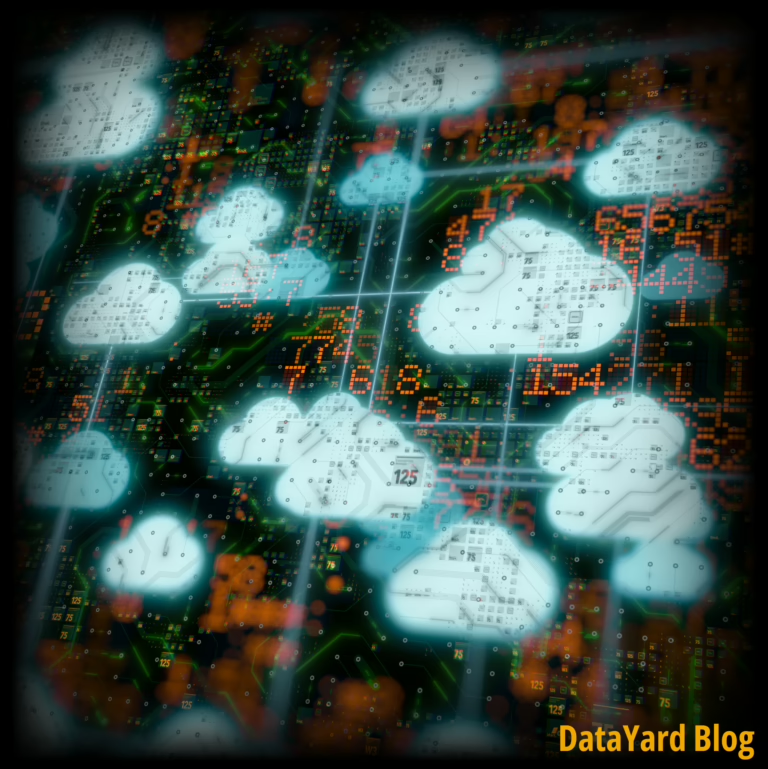
Scalable Cloud Services: What They Are and How to Plan for Cost-Efficient Growth
Scalable cloud services let your business flex during traffic spikes



You don’t need to be a Fortune 500 company to be the subject of a ransomware attack. Today’s cybercriminals are increasingly targeting small and mid-sized businesses because they often assume that these companies have limited IT teams that can be overworked or missing critical security measures.
At DataYard, we’ve spent decades helping organizations build secure, high-performance cloud infrastructure. After analyzing countless ransomware incidents, we’ve identified six of the most common cloud security gaps that leave businesses vulnerable. Not to worry, though — we’ll also cover how to close those gaps before cybercriminals come knocking.
Understanding these critical weaknesses is your first step toward implementing effective ransomware attack prevention. Each vulnerability represents a documented attack vector that cybercriminals actively exploit.

The Problem: Modern ransomware attacks often begin with a single compromised endpoint. One employee’s laptop had outdated antivirus software. One recycled password used across multiple accounts. One missed security update.
Common endpoint vulnerabilities include:
The Fix: Deploy next-generation endpoint detection and response (EDR) solutions combined with mandatory multi-factor authentication across all business systems. Regular security awareness training helps reduce human error risks in ransomware attacks.
Ask Us About EDR More About Cloud Security
The Problem: Network segmentation is one of the most effective strategies for ransomware protection, yet many businesses operate with flat networks. When ransomware gains access to an unsegmented network, it can spread laterally across your entire infrastructure within minutes.
Think of network segmentation like fire doors in a building. Without the proper barriers, a small fire can quickly become a devastating blaze. Similarly, without network segmentation, a minor breach can become a company-wide disaster.
The Fix: Implement zero-trust cloud architecture with network segmentation. Isolate critical workloads, limit cross-network communication, and deploy network monitoring tools that detect unusual lateral movement patterns immediately or work with cloud security professionals.
The Problem: When operating systems, applications, or hypervisors go unpatched, you’re leaving the back door open. Patching can be hard to coordinate, but waiting means risking a breach.
Attackers don’t wait for patch windows. They exploit zero-days and known vulnerabilities that admins “just hadn’t gotten around to taking care of yet.”
The Fix: Establish automated patch management systems with testing protocols. Prioritize critical security patches and maintain detailed vulnerability scanning schedules. If managing this internally feels overwhelming, partner with a managed cloud security provider who can handle the complexity while you focus on running your business.
The Problem: Many businesses discover their backup strategy is inadequate only after a ransomware attack happens. If your backups are stored locally, are accessible from your production environment, or haven’t been tested recently, they may be rendered useless when you need them most.
Best practices for cloud backups mean that they are:
The Fix: Deploy immutable backup solutions with automated testing protocols. Store copies in geographically diverse locations and maintain offline backups that remain completely disconnected from network-accessible systems. Run through regular restore scenarios to make sure your backups are viable when you need them most.
For businesses without dedicated backup infrastructure teams, partnering with a specialized provider like DataYard ensures enterprise-grade protection without the operational complexity.
The Problem: Cloud platforms (AWS, Azure, etc.) offer great tools, but they don’t configure themselves. Many businesses assume the default settings are secure. That isn’t always the case.
Without layered security, public cloud environments can become easy access for ransomware.
Essential cloud security configurations include:
The Fix: Whether you’re fully in AWS/Azure or using a hybrid model, security misconfigurations are one of the top ransomware entry points. DataYard specializes in hardening public cloud environments.
The Problem: Let’s say ransomware does hit you. What’s your plan?
If you don’t have a well-documented and regularly-tested disaster recovery (DR) plan, every minute of downtime means lost client trust, lost revenue, and mounting pressure. Worse? You might never recover the data at all.
The Fix: Develop comprehensive disaster recovery ransomware plans ahead of a security event. Conduct regular recovery drills using realistic ransomware scenarios and maintain alternate infrastructure locations for critical operations, or work with experts like DataYard to design, test, and manage it all for you.
At DataYard, we’ve helped businesses across industries build resilient cloud infrastructure by focusing on securing the cloud from every angle, including identity, access, security, network, backups, and recovery. Our approach focuses on five essential components that create multiple layers of protection.

Here’s what we’re recommending for every managed cloud client:
Strong identity management is your first line of defense against ransomware attacks. We implement multi-layered access controls that make it extremely difficult for attackers to gain initial access to your systems.
Technology alone isn’t enough; you need experienced professionals who understand your business and can respond quickly when issues arise.
Want to know if your environment has security gaps or risks?
Our RISE Foundations Assessment is a free, no-pressure cloud security audit that evaluates:
Cloud feeling a little cloudy?
Let’s shine some light on your security gaps, with a clear assessment and free roadmap report to help you move forward.
Start with a FREE DataYard RISE Assessment
Email: [email protected]
Phone: 937-226-6896 option 2
Learn More: Security Services
Schedule Your Free RISE IT RISK Assessment: Get Your Assessment
1. What makes personalized cloud support different from standard managed services?
Personalized support means receiving customized, high-touch service from experienced cloud professionals who understand your specific infrastructure requirements and business objectives. It’s concierge-level care for your cloud infrastructure, not generic support ticket responses.
2. How can I protect my business from ransomware attacks?
Effective ransomware protection requires a multi-layered approach:
Not sure where to start? Our free RISE Foundations Assessment provides a clear, prioritized roadmap for improving your security posture.
3. What’s the difference between a backup and ransomware backups?
Not all backups are created equal. A top-tier backup strategy has specific characteristics that make it resistant to attack.
An ideal backup strategy would be:
Many businesses assume they’re backed up because their SaaS tools sync to the cloud. That’s not enough.
4. What should a disaster recovery plan include for ransomware resilience?
A strong disaster recovery (DR) plan includes:
If you’re unsure what your plan looks like or if it exists at all, we can help you build or validate one – contact us today!
5. Is my public cloud provider (like AWS or Azure) enough for ransomware protection?
Not by itself. AWS, Azure, and other public clouds offer tools, but you’re responsible for securing them. That includes:
If that sounds overwhelming, that’s why companies partner with DataYard. We handle the architecture, patching, and protection so you’re not left guessing – learn more about our cloud security solutions.
Your business deserves comprehensive protection, not checkbox security approaches. You need experienced partners who prioritize uptime, data protection, and ransomware resilience as seriously as you do.
DataYard provides that partnership.
Email: [email protected]
Phone: 937-226-6896 option 2
Learn More: Security Services
Schedule Your Free RISE IT RISK Assessment: Get Your Assessment
Disclaimer: This content is for informational purposes only and doesn’t replace tailored cybersecurity advice. Every environment is different, please talk to a professional (like us) before making changes.

Scalable cloud services let your business flex during traffic spikes

On November 18, 2025, the Cloudflare Outage disrupted websites and

Cybersecurity can’t be limited to reacting to threats, especially when